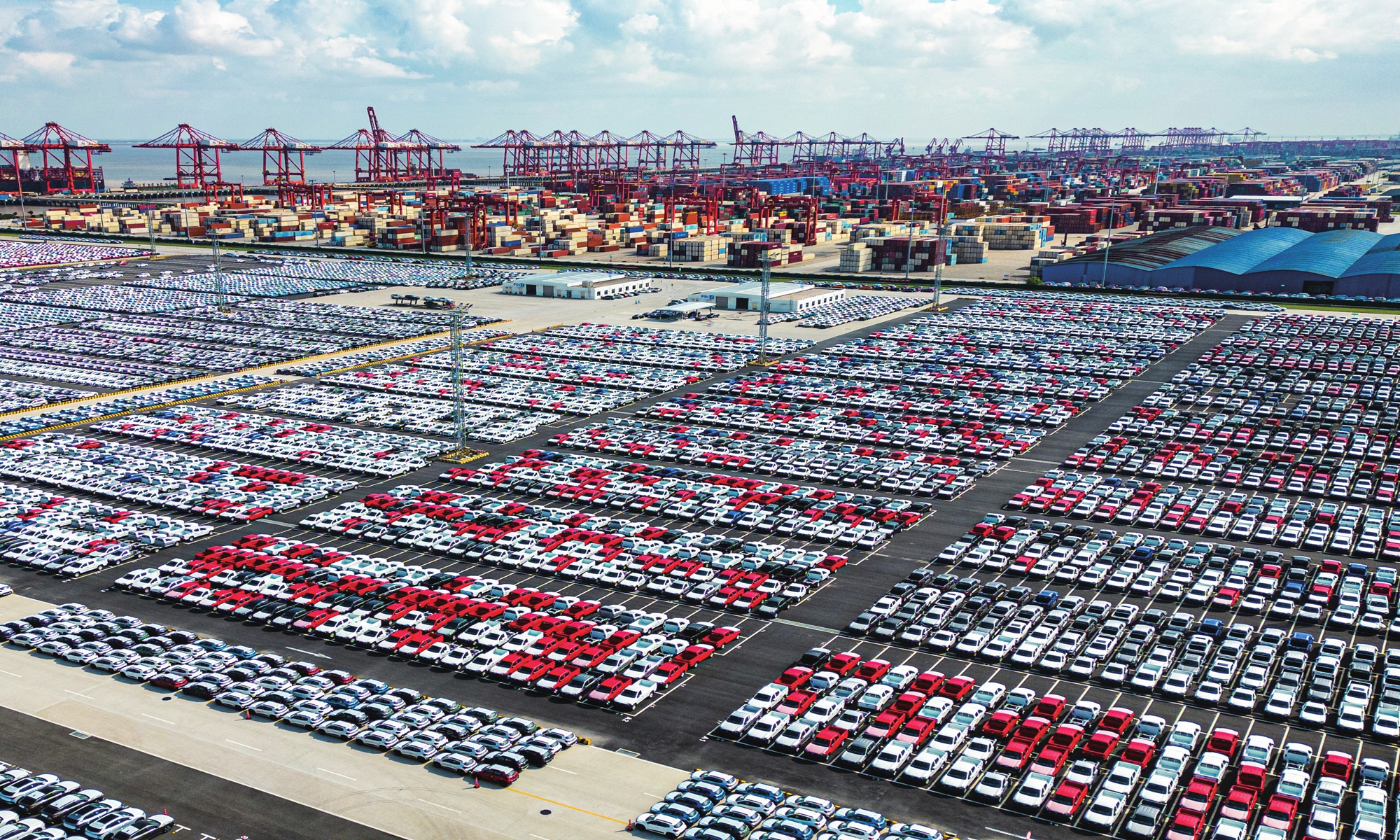
Automobiles are ready to be exported from the Taicang Port, East China’s Jiangsu Province, on October 31, 2022. Cars handled by the port from January to September reached 218,700, of which 60,700 were exported. The car throughput in September reached 33,700, with 22,500 being exported, hitting a record high. Photo: cnsphoto.
The China Association of Automobile Manufacturers (CAAM) on Wednesday called for a return to normal order after major Chinese car makers kicked off price war to boost sales in March.
The CAAM said on its official WeChat account on Wednesday that it has been aware of the car promotion activities. It believes that this round of price speculation should be cooled down as soon as possible, to ensure the healthy and stable development of the industry throughout the year.
Most of the discounted vehicles are older models, which have already enjoyed considerable preferential prices before the current round of promotion. Exaggerating price cuts is misleading for consumers, the CAAM said.
While discounting is a normal measure to reduce inventory and recover costs, it should not lead to a price war, the association said, calling relevant parties to view this rationally and jointly maintain market order.
The statement from the CAAM came after a big car purchase subsidy initiated in Central China's Hubei Province in March triggered a wave of car price cuts followed by other provinces and cities.
According to thepaper.cn, consumers purchasing certain brands built by the Dongfeng Motor Group, a leading automaker in Hubei, can enjoy 90,000 yuan ($12,930) in price cuts with subsidies offered by the local government and car enterprises.
At least 30 brands have since officially announced promotional incentives as of Monday, according to Seashell Finance.
The subsidized vehicles, mostly conventional petrol cars, also triggered market concerns that new-energy vehicles are replacing traditional combustion engines.
The CAAM said that although the development of new-energy vehicles is fast, fuel vehicles are also accelerating technology upgrading, and for a long period of time, the two will coexist and jointly meet different consumption needs.
In 2022 the production and sales of new-energy vehicles reached 7 million units, accounting for a quarter of the market. Looking ahead into 2023, the production and sales of new-energy vehicles are expected to hit 9 million, maintaining a rapid growth rate, according to CAAM.
Global Times




